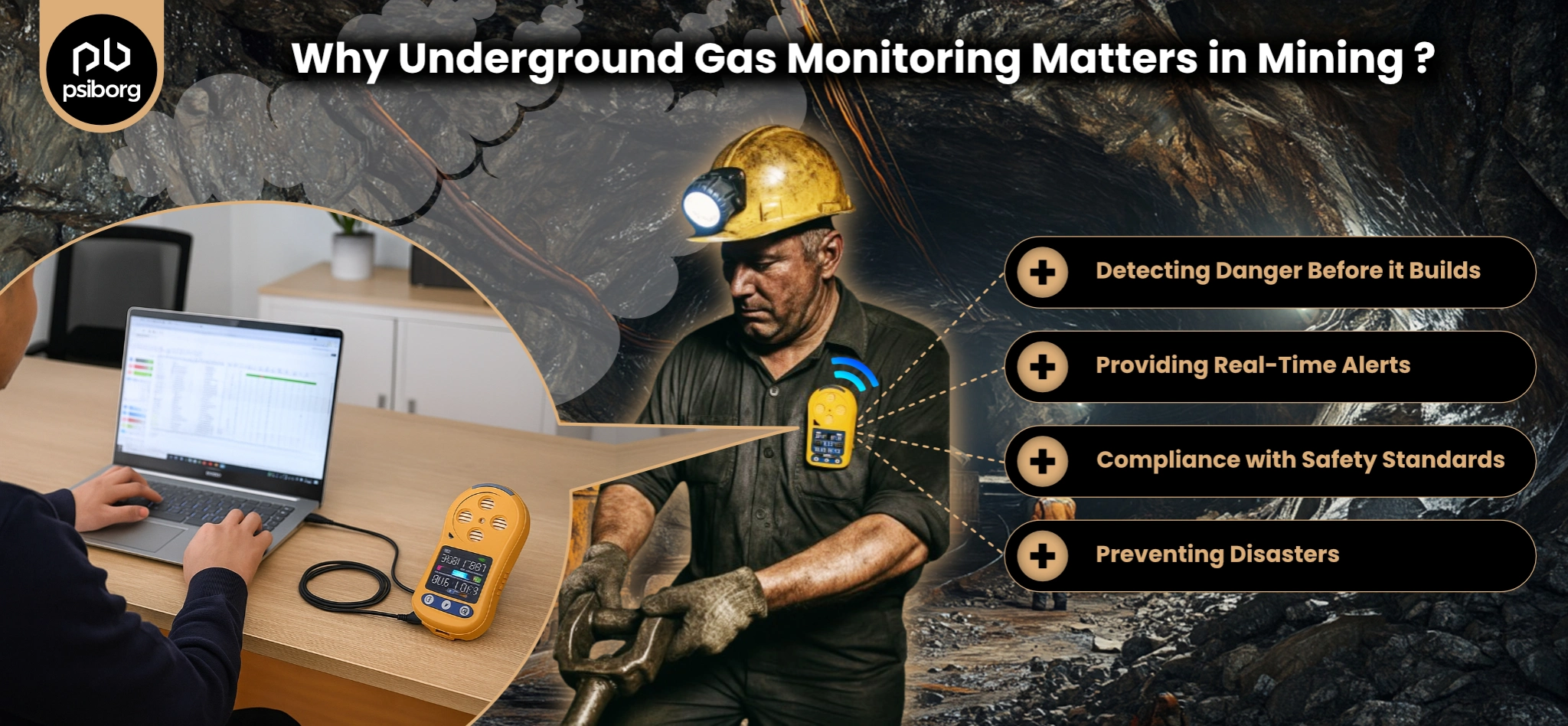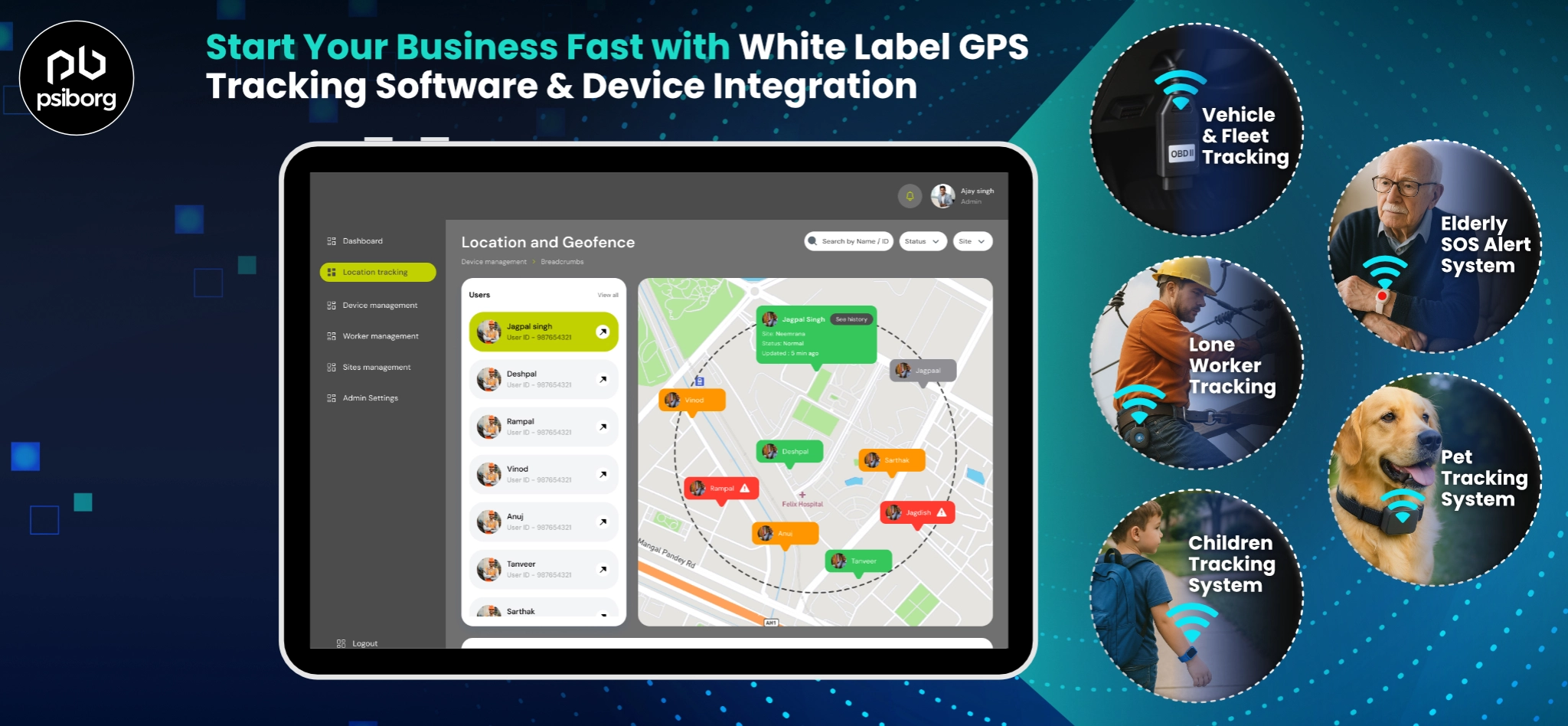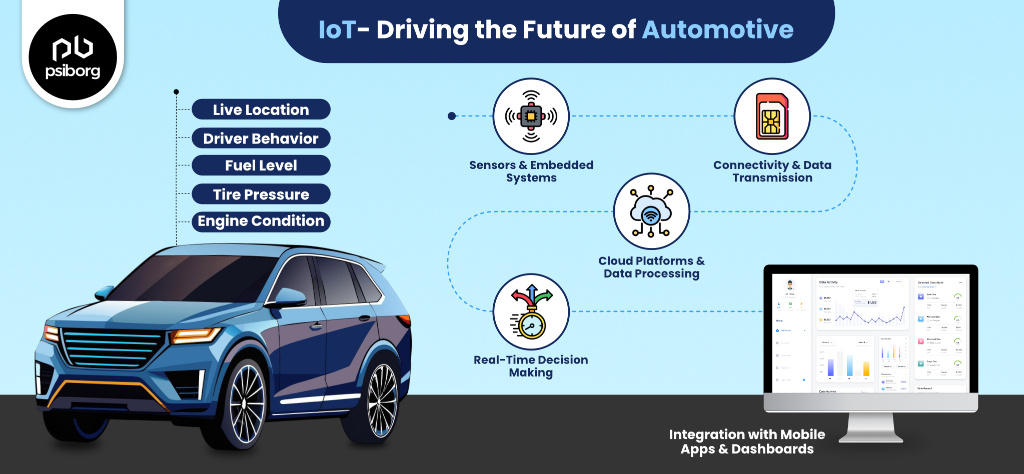Making everything “smart” is so in trend these days that there is no chance you have never heard of smart buildings and smart homes.
If you have heard the name, do you know what it means? And what makes a building “smarter”?
IoT in smart buildings can be understood as a building that uses internet-enabled devices to give safety and comfort to its residents while at the same time monitoring and regulating several elements of the building.
Here, the devices we are talking about are actually part of the Internet of Things (IoT). With IoT in smart buildings, it means physical electronic sensor networks and actuators that are connected to each other and to the internet.
Like the smartwatches that you control through an app on your phone.
IoT has quickly become part of almost all industries. More than 80% of businesses have configured their environments with IoT systems to become more efficient.
Today, in this blog, we will discuss all about IoT smart building solutions, how they’re beneficial, how they can be implemented, and why you should also hop on this smart building trend.
So, let’s start!
SMART BUILDINGS: AN OVERVIEW
It’s true that smart technology can offer you control over your building and is much more than just a building management system.
With the use of IoT devices like sensors, software, and online connectivity, buildings can monitor several characteristics, analyze the data, and generate insights around their usage patterns to more efficiently optimize the building’s environment, thus, becoming smart buildings.
For instance, smar buildings using IoT in HVAC gives you extra control over how you operate your HVAC (heating, ventilation, and air-conditioning) system.
Smart connected buildings in IoT can be classified into three types: smart homes, smart commercial buildings, and smart manufacturing places. These three types of IoT smart building solutions are slightly different, depending on the occupants of the building.
If we talk about smart homes, they can be individual residences, apartment buildings, or residential care facilities. Smart commercial buildings will be office buildings, healthcare facilities, and retail buildings. However, smart manufacturing places include factories and big manufacturing plants.
Now all three types of smart buildings use IoT to create Building Automation Systems (BAS) or building management systems where users can improve indoor environments.
The IoT & smart buildings market is expected to reach above $100 billion this year. If you come to think of it, buildings are large expenses, so owners are actively looking for innovative ways to make them more efficient.
This is why IoT technologies are becoming more common in residential properties.
Suggested Reading: Features of Smart Home App
HOW IOT SYSTEMS CAN CREATE SMART BUILDINGS?
The IoT systems are very reliable in their architecture, which comprises three primary layers:
- The hardware (sensor) layer.
- The software control layer.
- The application layers.
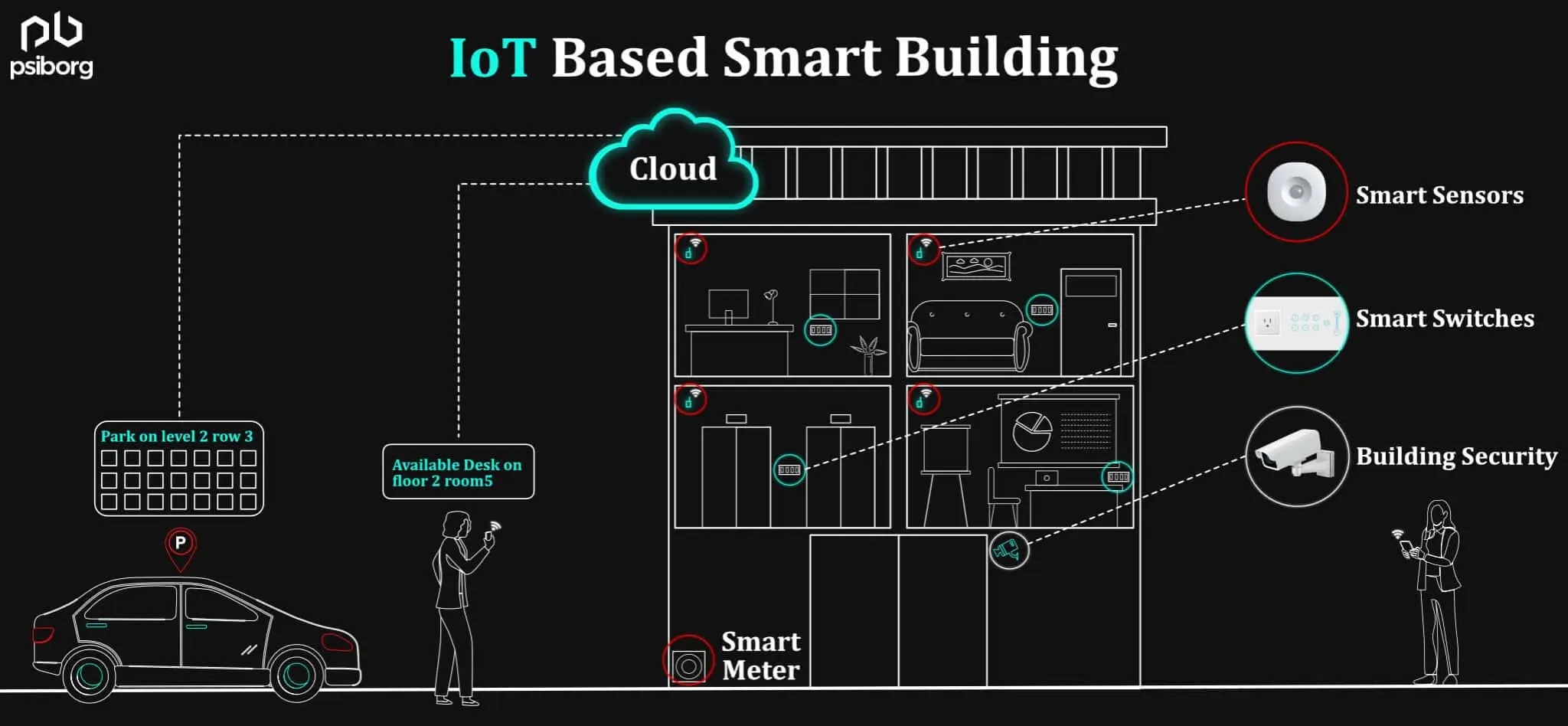
And The IoT architecture has four components:
- Monitoring and controlling
- Location-based automatic control
- Cloud computing platform for data storage
- Applications and analytics.
With the use of IoT in smart buildings, it is possible to create a building automation system (BAS).
Let me tell you how the BAS system works.
The IoT devices have a built-in sensor that gathers information about the building. Once you have the sensor gathering all the data, you have to process and transfer this data through a database, a server, or a speedy P2P system.
By processing and analyzing the data, one can figure out the ideal indoor temperature to manage both comfort and energy consumption. Next, the actuators, which are the IoT device components, can perform a specific action, like adjusting the temperature according to the data.
Aside from this, the IoT system can also manage building security. Security cameras are a part of the IoT system, and they can provide real-time video surveillance on your smartphone through a security monitoring app.
So, you can monitor home security even when you are on vacation.
Some other uses of integrating IoT in smart buildings are:
- Controlling lighting,
- Maintaining indoor air quality
- Managing water usage
- Pest Control
CONTROLLING LIGHTING
With smart lighting, one can control lights throughout the building with the help of the data collected by the IoT sensor network.
In smart buildings, the lighting is usually divided into zones to promote efficient energy usage based on areas with current occupancy as well as ambient natural lighting. One can control the lighting manually through an app on their phone or set the lighting system to manage light levels automatically.
This way, you can save up to 80% on lighting costs.
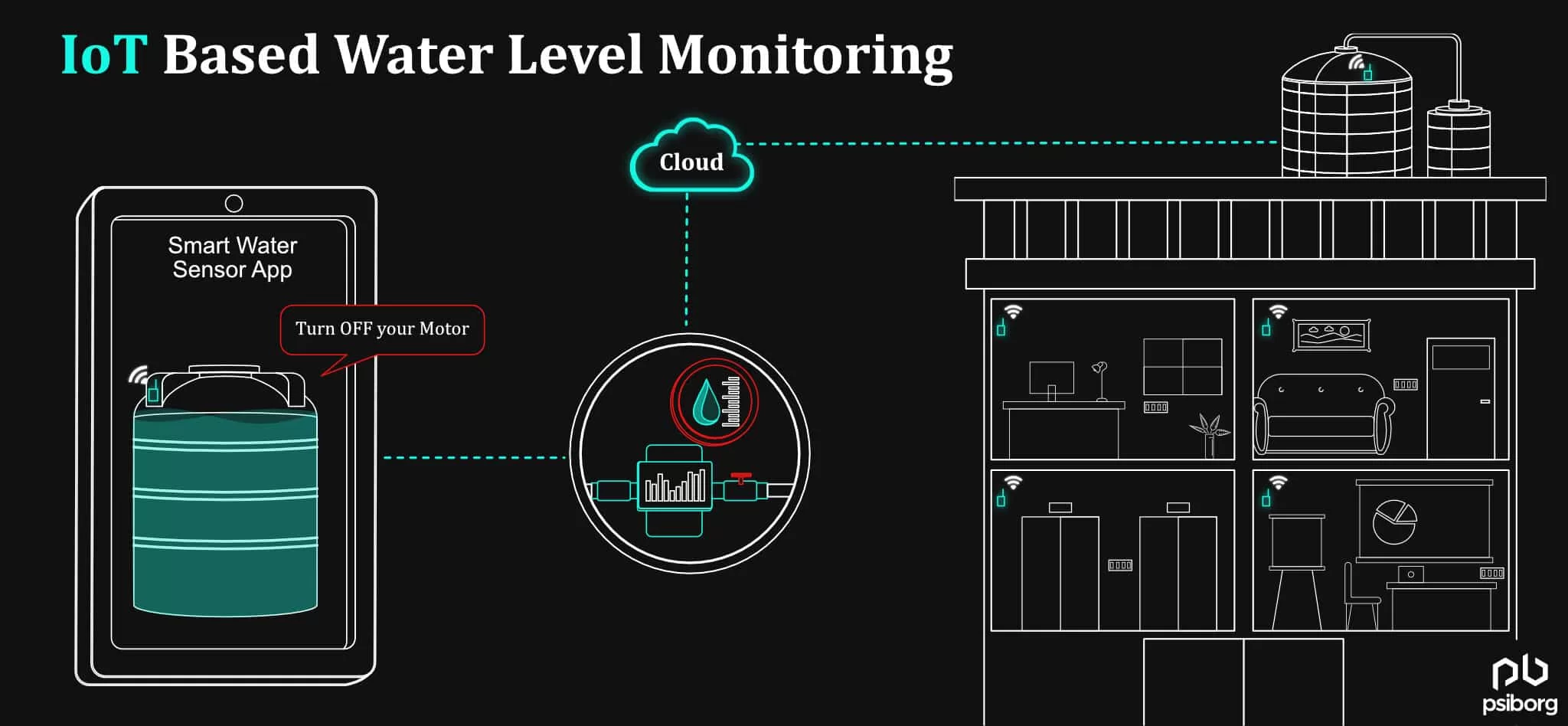
MANAGING WATER USAGE
For managing water, monitoring water usage and saving water are paramount.
On average, a person spends 90% of their time indoors (In this sweltering summer, who would want to go outside?). And on average, a family uses 300 liters of water daily. Office workers use approximately 30 liters each day at work. Now that the water resources are all drying up, saving water is becoming more essential.
By embedding IoT-enabled sensor networks in water supply channels, we can get the data we need to monitor and control water usage. These IoT sensors can alert users to take temporary measures.
MAINTAINING INDOOR AIR QUALITY
If we talk about air quality monitoring, IoT sensors can collect information about the temperature and humidity levels. These sensors can identify harmful contaminants in the air and alert users to manage the situation.
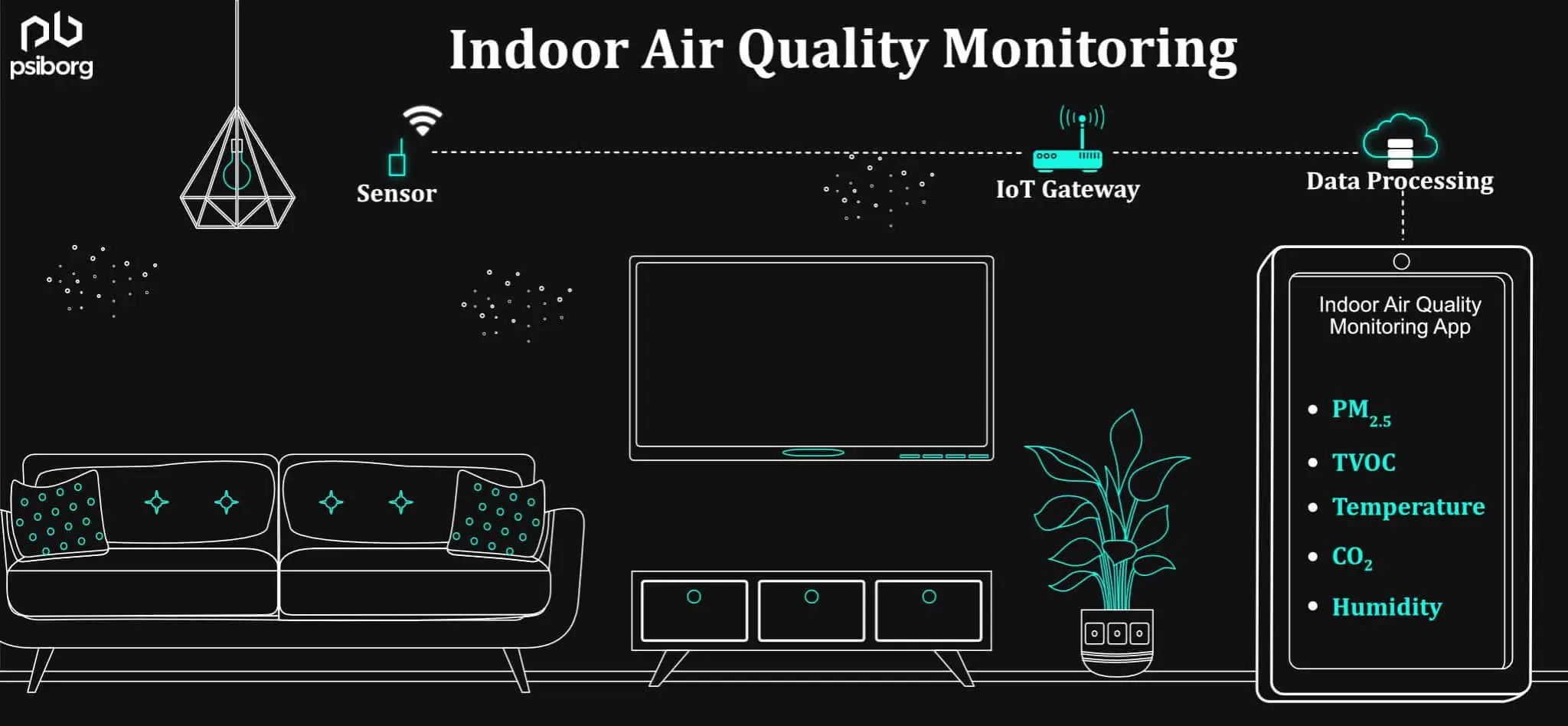
PEST CONTROL
Creepy crawlies like rats, mice, roaches, and moths can impose financial and operational discomfort on the building owners by contaminating the property. The traditional pest control method is to install a large number of poison traps in various locations of the building.
But this is an inefficient approach with lots of manual work.
However, with the use of IoT in smart buildings, pest control can be facilitated. This is done by enabling the deployment of smart traps. Allowing professionals to check the installed traps with just a few clicks through a pest control portal, and keeping the entire process cost-effective for pest control service providers.
Isn’t this fascinating?
When everyone is looking to “go green,” smart buildings using IoT can be the best way to optimize energy usage and reduce carbon footprints.
Go green and aim for sustainability with PsiBorg’s smart IoT solutions.
HOW TO GET STARTED WITH SMART BUILDINGS TECHNOLOGY?
The advisable and simplest way to turn your building into a “smart building” is by partnering with an IoT solution provider that specializes in smart buildings.
Whether you want to solve a single operational issue or are looking to implement a broader IoT solution in your building, it is advised to evaluate your providers on the following points:
1. Does their delivery include an advanced analytics platform?
2. Do they have practical expertise in providing smart building solutions?
3. Are they well-versed in connectivity?
LOOKING FOR A TRUSTED IOT PARTNER?
Talk to us at PsiBorg. We work to help businesses gain more control over building operations with the use of IoT. Thus reducing costs, maximizing efficiency, and providing sustainability.
If you are struggling with a particular operational problem, let us know, and we will help you solve the problem at hand.
After all, IoT is the answer to all problems, and in the next 5-7 years, we will see a huge transformation in buildings where IoT solutions will be one of the key enablers.
Reach out to us, we would love to help you with our smart building solutions for your building transformation project.
Meanwhile, happy scrolling!
FAQ
The term smart buildings refers to the use of IoT technology in the daily operations of a building. To be precise, IoT is utilized in smart buildings to allow remote connectivity that helps in monitoring and tracking facility teams and is also used to optimize energy consumption.
Some applications of using IoT in smart buildings are:
- Energy consumption monitoring
- HVAC control
- 24/7 monitoring to maximize tenant security
- Fire safety
- Smart lighting
The idea behind smart buildings is to establish a systematized and productive environment where security is controlled and indoor comfort is provided through task automation and energy optimization like lighting and HVAC to reduce greenhouse gas emissions. Smart buildings are basically smarter living solutions for a smarter world.



